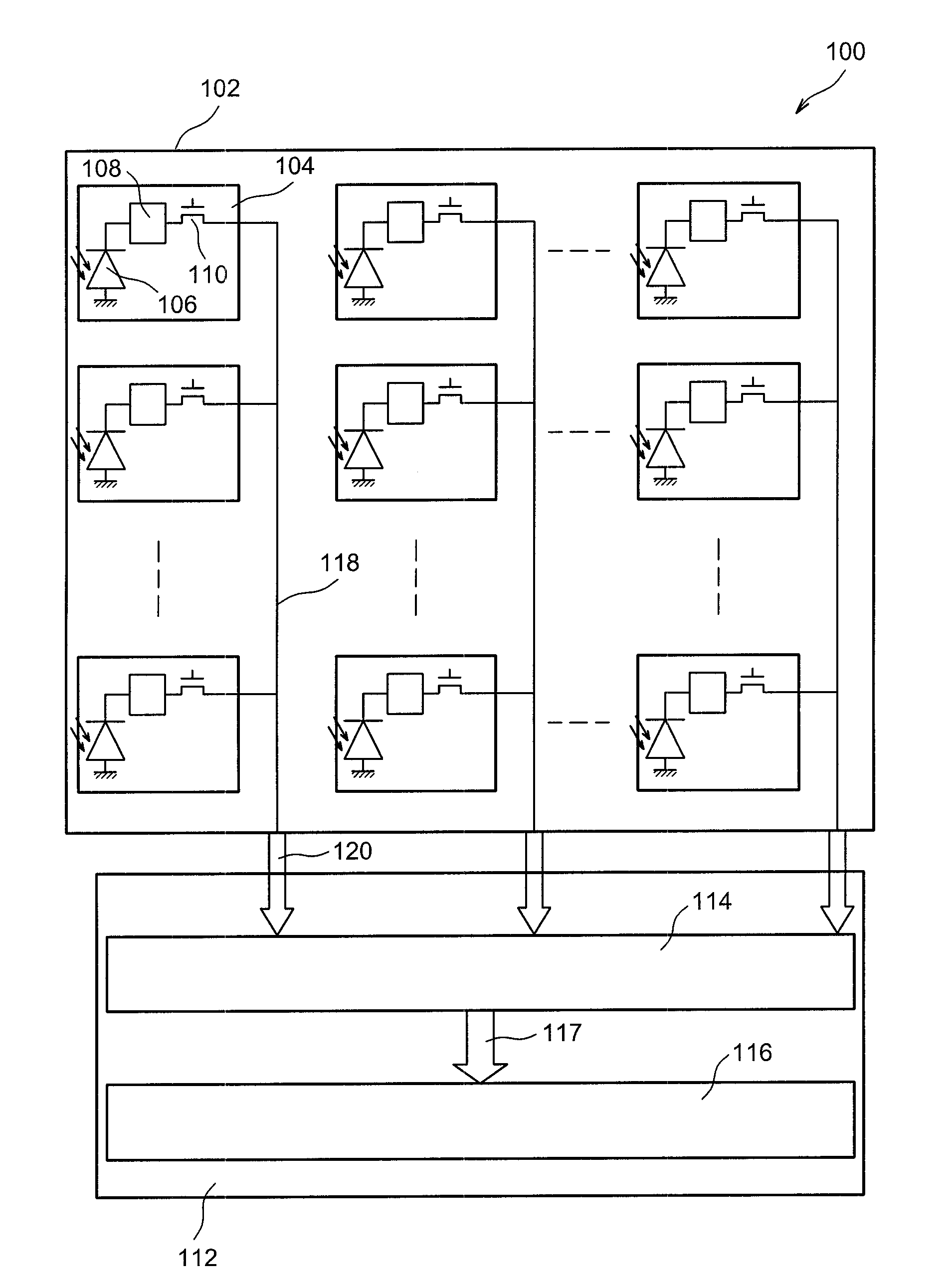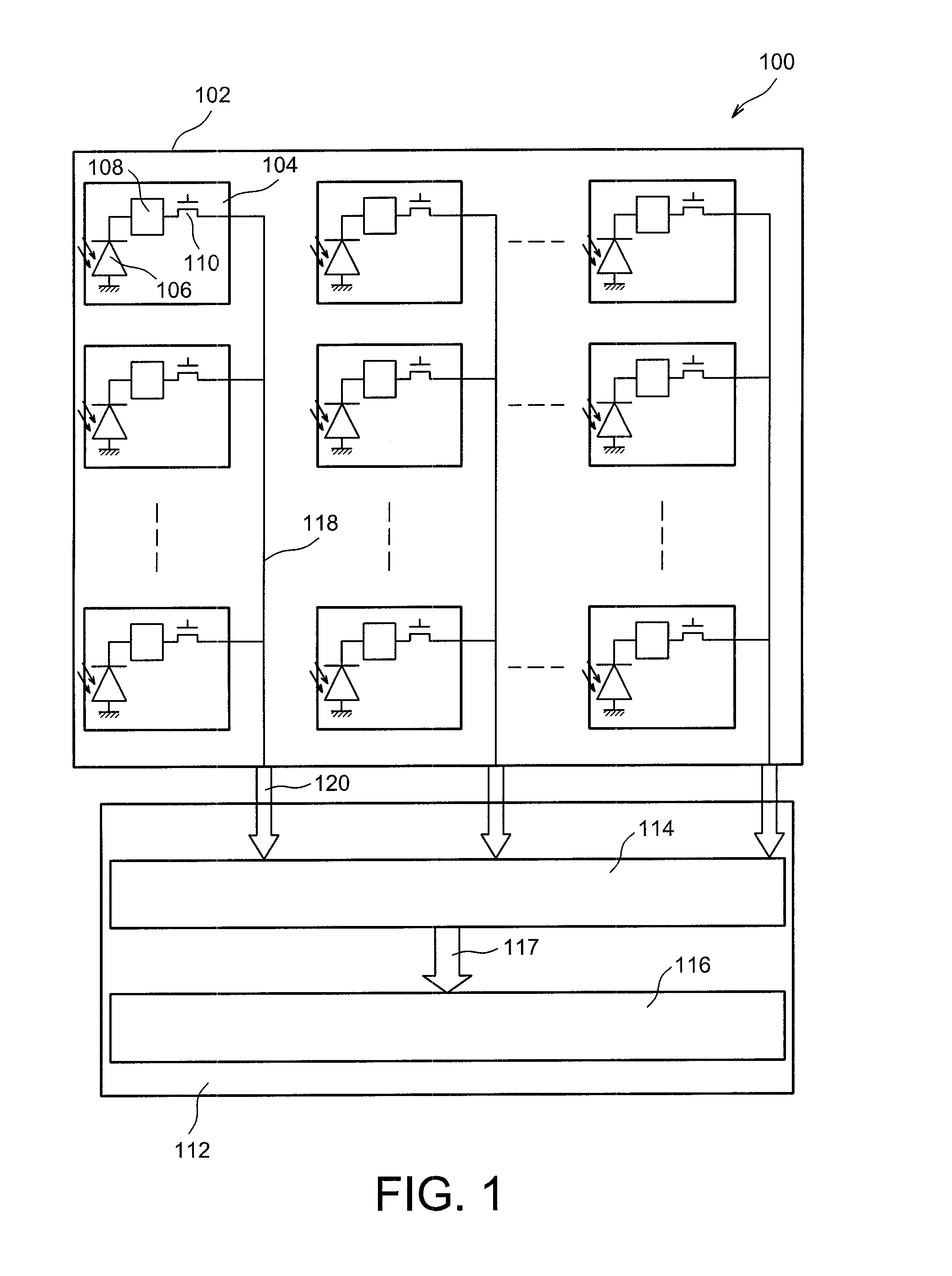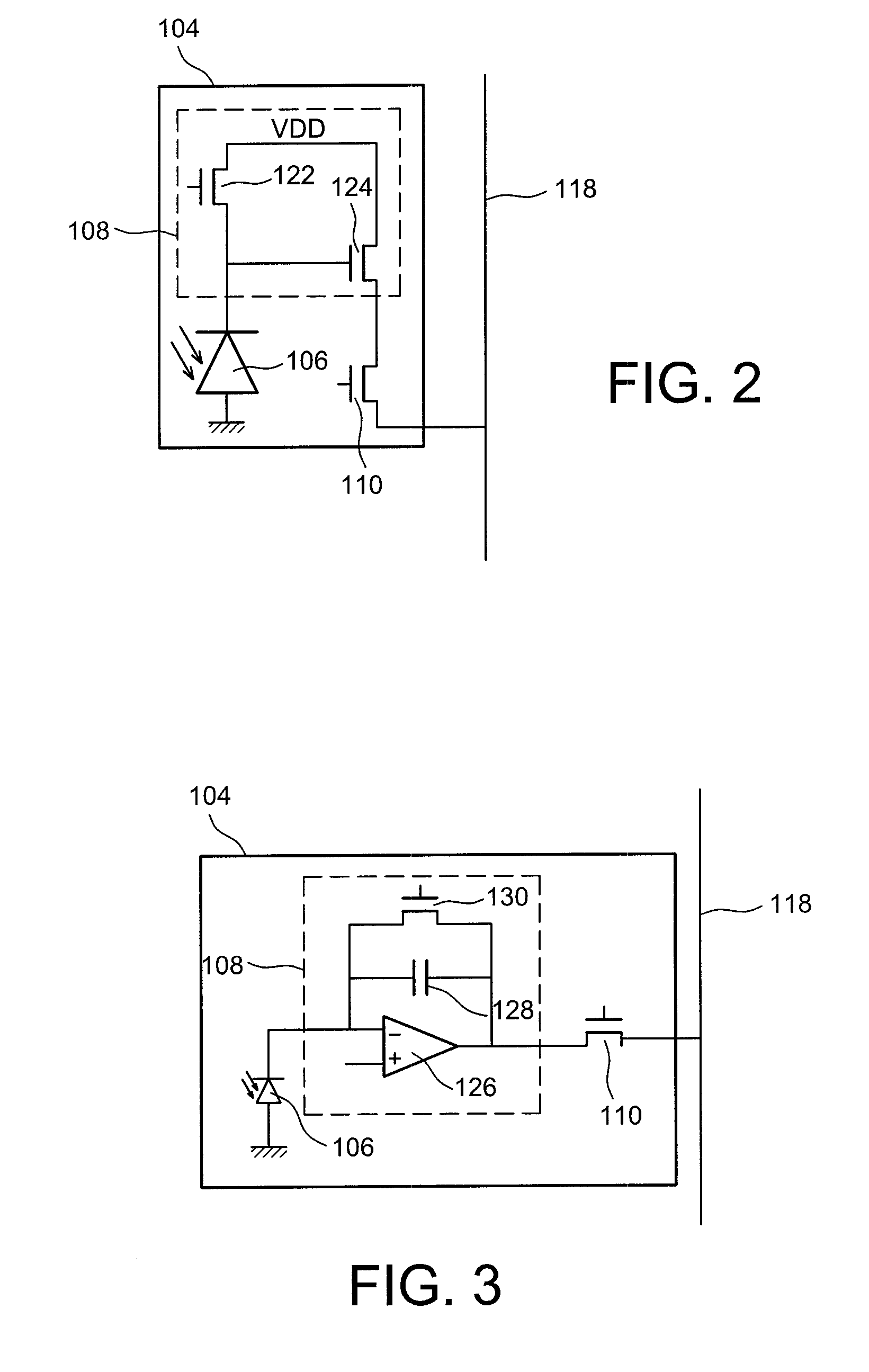CMOS imaging device with three-dimensional architecture
a three-dimensional architecture and imaging device technology, applied in the direction of radio frequency controlled devices, instruments, transistors, etc., can solve the problems of not being able to obtain junction capacitance values, not being able to produce high-performance imaging devices comprising pixels of small size,
- Summary
- Abstract
- Description
- Claims
- Application Information
AI Technical Summary
Benefits of technology
Problems solved by technology
Method used
Image
Examples
first embodiment
[0053]Reference is firstly made to FIG. 1 which schematically and partially represents an imaging device 100 according to a
[0054]The imaging device 100 comprises a first substrate 102, for example composed of a semi-conductor material such as silicon, on which is formed a detection circuit of the imaging device 100 formed by a plurality of pixels 104 laid out in the form of an array of n lines and m columns.
[0055]Although in FIG. 1 only nine pixels 104 are represented, the imaging device 100 comprises a much greater number of pixels 104, for example several million or several tens of million. In the example of FIG. 1, the pixels 104 each have a square shape, the sides of which have a dimension substantially equal or less than around 2 μm.
[0056]Each pixel 104 comprises a photodetector, for example a photodiode 106, intended to convert the energy of incident photons received by each of the pixels 104 into electron-hole pairs.
[0057]In a variant, the photodetectors of the imaging device...
second embodiment
[0078]In a second embodiment, the electrical interconnections 120 may be formed by a molecular bonding performed between the two substrates 102, 112, the electrical contacts of the two substrates 102 and 112 then joined together by said bonding. Such a molecular bonding is obtained by carrying out firstly a planarization of the two substrates, then placing in contact the two substrates. An annealing enables the join between the two substrates 102 and 112 to be made.
[0079]Whatever the technique used to join the first substrate 102 to the second substrate 112, or even if it is wished that the two substrates 102 and 112 are not joined to each other but simply brought close to each other, the electrical interconnections 120 may also be formed by traversing vias formed through the substrates 102 and 112.
[0080]When the electrical interconnections 120 are formed by way of beads of electrically conductive material or by carrying out a molecular bonding of the two substrates 102 and 112, the...
third embodiment
[0109]Reference is now made to FIG. 6, which schematically and partially represents an imaging device 300 according to a
[0110]Unlike the imaging device 100 described previously with reference to FIG. 1, each pixel 304 of the imaging device 300 comprises another MOS transistor 306 for selecting pixels, serving to select one of the columns of pixels 304. Thus, each pixel 304 of a macropixel of the imaging device 300 may be addressed individually by turning on the MOS transistors 110 and 306 of the pixel in question. Given that the imaging device 300 makes it possible to perform an individual addressing of the pixels 304, the buses 118 of a same macropixel are electrically connected to each other and the electrical link of a macropixel with the second substrate 112 is formed by way of a single electrical interconnection 120. In addition, the electrical interconnection 120 is directly connected to the electronic processing circuit 116, the multiplexing circuit used in the imaging device...
PUM
 Login to View More
Login to View More Abstract
Description
Claims
Application Information
 Login to View More
Login to View More - R&D
- Intellectual Property
- Life Sciences
- Materials
- Tech Scout
- Unparalleled Data Quality
- Higher Quality Content
- 60% Fewer Hallucinations
Browse by: Latest US Patents, China's latest patents, Technical Efficacy Thesaurus, Application Domain, Technology Topic, Popular Technical Reports.
© 2025 PatSnap. All rights reserved.Legal|Privacy policy|Modern Slavery Act Transparency Statement|Sitemap|About US| Contact US: help@patsnap.com



